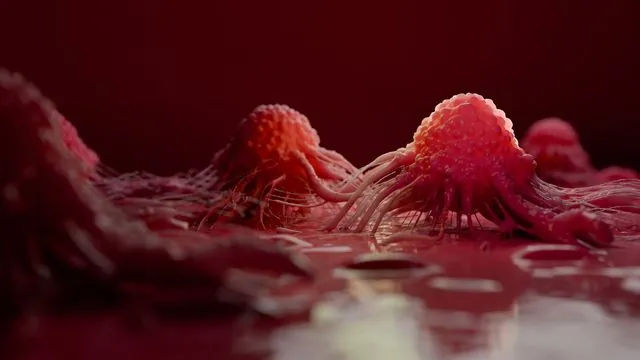
Groundbreaking Discovery Reveals Key Drivers Behind Melanoma Development
2024-11-25
Author: Sarah
Introduction
In the relentless battle against skin cancer, a team of scientists from LMU has made a significant breakthrough in understanding melanoma, the deadliest form derived from pigment-producing cells called melanocytes. A major contributor to the development of melanoma is the overexposure to ultraviolet (UV) light from various sources, particularly sunlight, which can trigger harmful mutations leading to tumor formation.
Research Details
Leading the research effort, Professor Christian Grimm from the Walther Straub Institute of Pharmacology and Toxicology, alongside Dr. Karin Bartel from the Faculty of Chemistry and Pharmacy, delved into the intricate molecular mechanisms responsible for tumorigenesis. Their findings highlight the crucial interaction between two proteins: the ion channel TPC2 and the enzyme Rab7a. This interplay not only promotes the growth of melanoma but also its metastasis, making it an important focus for future treatments.
Key Findings
The researchers discovered that specific mutations in the TPC2 ion channel are linked to traits such as fair skin, blond hair, and albinism, putting individuals with these characteristics at a higher risk for melanoma due to reduced protective measures against UV damage. Interestingly, a reduction in TPC2 activity was associated with lower melanoma risk, showcasing the potential for targeted therapies.
Mechanism of Action
Further investigations revealed that Rab7a regulates the endolysosomal system similarly to TPC2. By conducting advanced experiments, including endolysosomal patch-clamp electrophysiology and fluorescence microscopy, the team confirmed the functional relationship between Rab7a and TPC2, which significantly induces melanoma cell growth and invasiveness. In fact, inhibiting Rab7a led to decreased TPC2 activity and a reduction in melanoma proliferation—an exciting prospect for developing new treatments.
Significance of the Study
"Our results indicate that Rab7a plays a pivotal role in tumor growth regulation by amplifying TPC2 activity," explained Grimm. "In particular, when Rab7a activates TPC2, it lowers levels of a protein that stabilizes a crucial transcription factor, influencing melanoma cell proliferation and survival."
In Vivo Applications
One of the most remarkable aspects of this study was the demonstration of these interactions in vivo. In mouse models with melanoma cells lacking Rab7a or TPC2, researchers observed a significant reduction in tumor size and metastasis. "This discovery opens doors to innovative therapeutic strategies aimed at targeting specific signaling pathways that facilitate melanoma progression," concluded Grimm.
Conclusion
This research not only enhances our understanding of melanoma biology but also sets the stage for potential clinical applications that could revolutionize treatment approaches. Stay tuned for more exciting developments in skin cancer research that could change the lives of millions in the fight against melanoma!

 Brasil (PT)
Brasil (PT)
 Canada (EN)
Canada (EN)
 Chile (ES)
Chile (ES)
 España (ES)
España (ES)
 France (FR)
France (FR)
 Hong Kong (EN)
Hong Kong (EN)
 Italia (IT)
Italia (IT)
 日本 (JA)
日本 (JA)
 Magyarország (HU)
Magyarország (HU)
 Norge (NO)
Norge (NO)
 Polska (PL)
Polska (PL)
 Schweiz (DE)
Schweiz (DE)
 Singapore (EN)
Singapore (EN)
 Sverige (SV)
Sverige (SV)
 Suomi (FI)
Suomi (FI)
 Türkiye (TR)
Türkiye (TR)